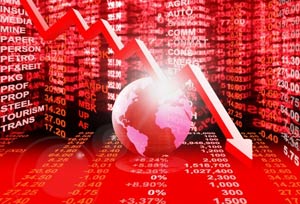We're facing a stock market crash unlike any other most investors have seen - but we'll be ready by taking these steps... Those who take steps to prepare will come through this crisis unscathed, and even make a lot of money - but you must act quickly. Learn everything you need to know to protect and profit from the stock market crash with this exclusive guide, including: This is your chance to gain immediate protection from the downside - and even position yourself to profit from this cataclysmic stock market crash. Don't delay - this will happen sooner than most people think. In fact, it's already started... One of the biggest stock market collapses we'll see in our lifetime is hurtling toward us, threatening to take out unsuspecting investors like a freight train.
One of the biggest stock market collapses we'll see in our lifetime is hurtling toward us, threatening to take out unsuspecting investors like a freight train.
